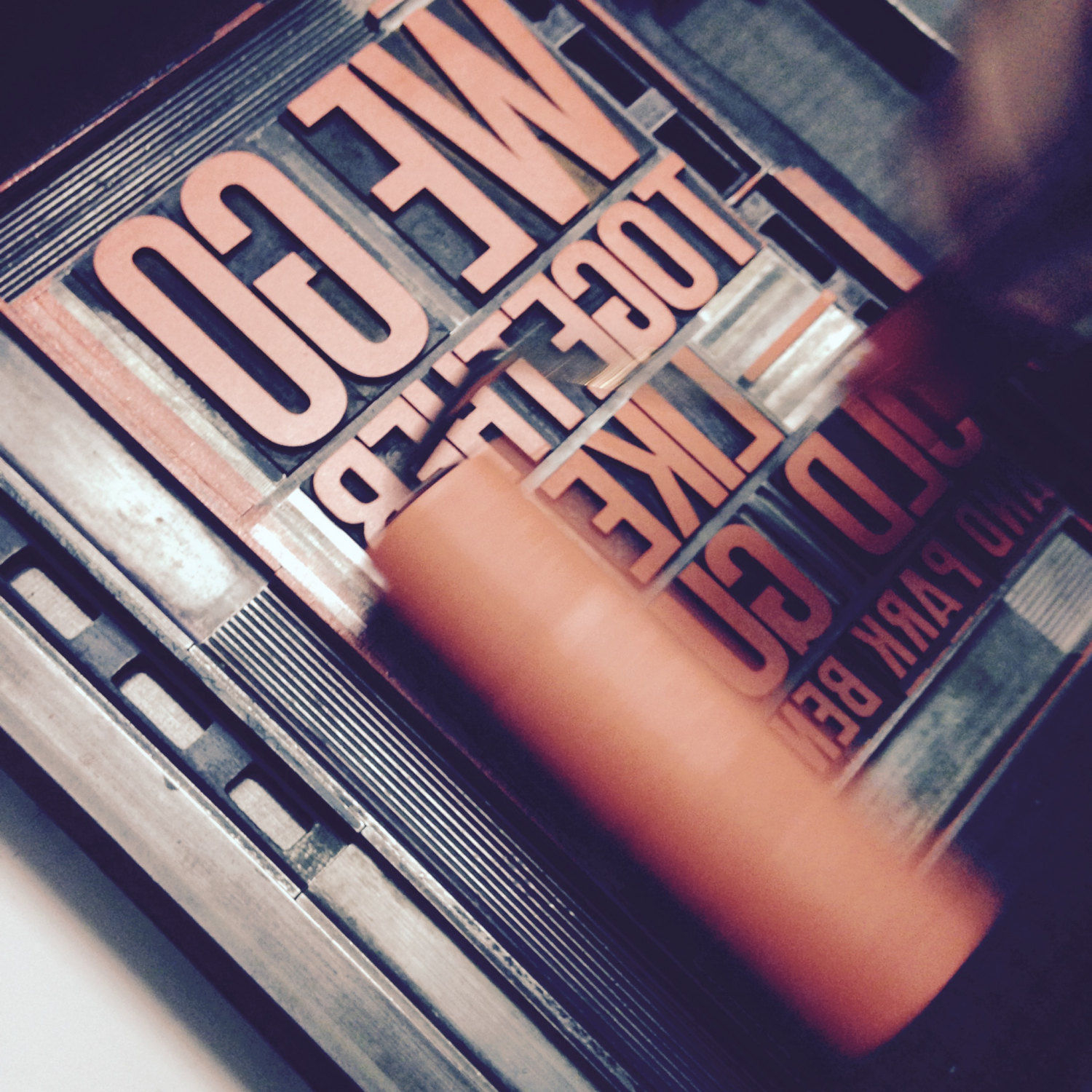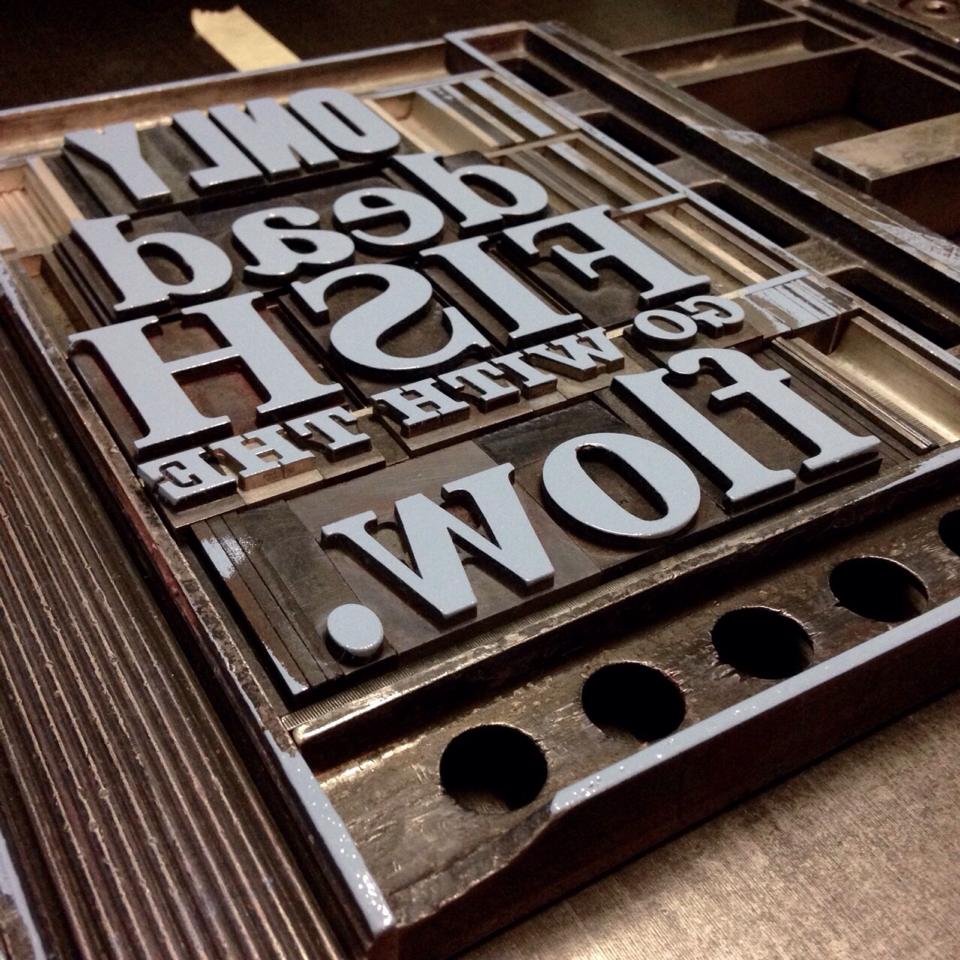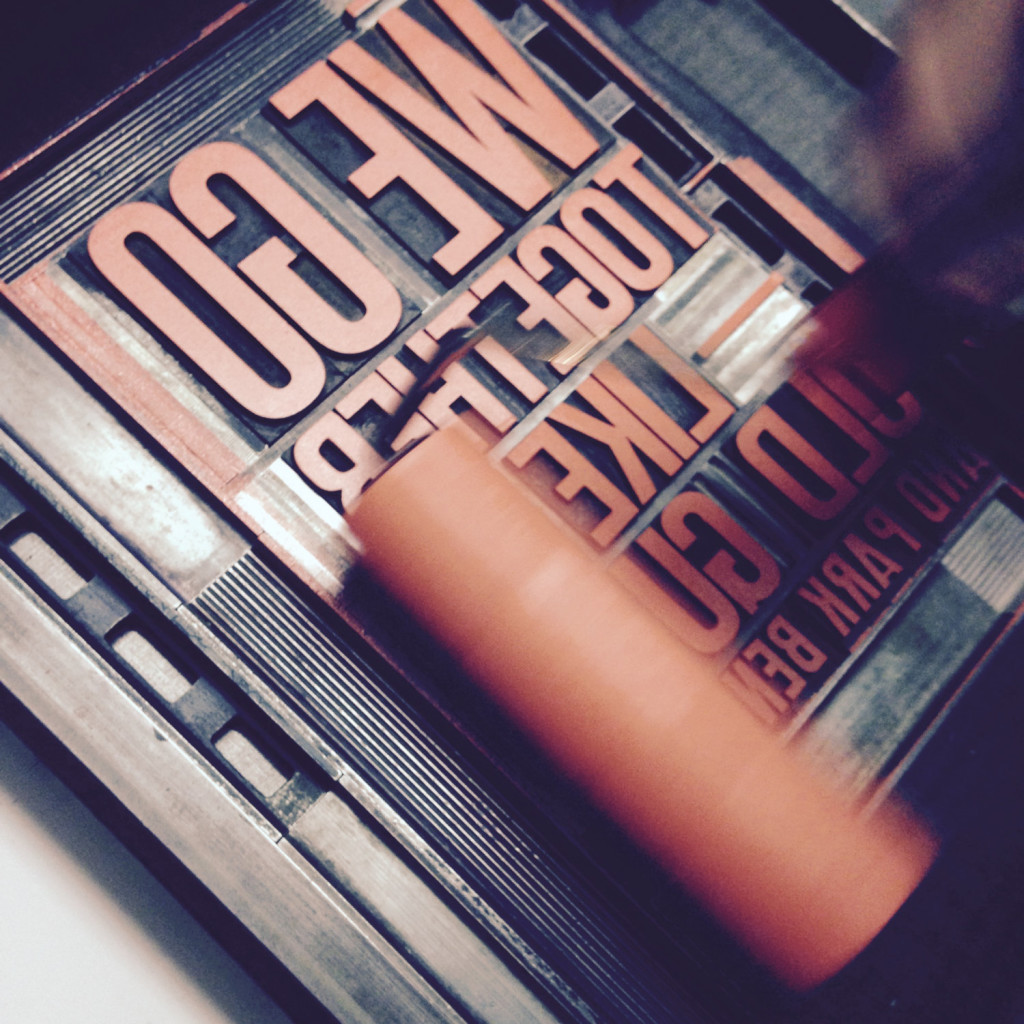Dagli “amanuenses” alle prime tecniche orientali con i caratteri mobili, fino alla rivoluzione di Gutenberg, la stampa si è sempre nascosta dietro misteri e storie incredibili.
Questo affascinante strumento di comunicazione messo a disposizione dell’uomo è in continua evoluzione, dopo aver cavalcato l’era della stampa digitale si prepara ad accogliere le novità del 3D. Ma siamo pronti ad accantonare quelle impronte scritte con i caratteri mobili e clichè inchiostrati che raccontano della nostra identità?
Scopriamo Quaderni di Carattere, un progetto giovane, Made in Italy, che crea e non dimentica le muse del passato.
[irp posts=”3008″ name=”Illusion: equilibrio tra fotografia e grafica – Intervista a Barbara Scerbo”]
Davide e Silvia e il progetto Quaderni di Carattere. Di cosa si tratta?
Quaderni di Carattere è una micro-attività che si occupa di stampa a caratteri mobili con l’obiettivo di mantenere viva e diffondere la tipografia di una volta.
Da dove nasce questa passione per la grafica e la voglia di riportare alla luce la stampa di una volta nell’era della stampa 3D?
Siamo laureati entrambi in graphic design, fin dal principio ci siamo rapportati al mondo della progettazione contando quasi esclusivamente su mezzi digitali, il computer primo tra tutti. Circa tre anni fa ci siamo ritrovati nel bel mezzo di un evento che vedeva come protagonisti tirabozze, caratteri mobili, inchiostri, e rulli; abbiamo deciso così di iniziare a utilizzare tali strumenti presenti nello scantinato, divenuto ora il nostro studio. Dopo una serie di esperimenti abbiamo concretizzato la nostra progettazione creando Quaderni di Carattere.
Le attuali tecnologie sono un mezzo per comunicare contenuti in maniera veloce e precisa, abbiamo pensato dunque di servirci di questa tecnica di stampa, così antica e affascinate, per comunicare in maniera differente, creando moderni elaborati grafici e tipografici, in possesso di un forte collegamento con il passato. Una cosa non esclude l’altra, però. Ci piace mixare questi due mondi progettuali, quello digitale e quello analogico: molte volte ci ritroviamo a utilizzare il computer per progettare grafiche, che verranno poi trasformate in matrici (clichè) da utilizzare in maniera totalmente analogica.
Si tratta, dunque, di scegliere la tecnica più adeguata per il tipo di comunicazione che si vuole attuare. Per tale motivo pensiamo che, anche se viviamo nell’era della stampa 3D, ci sia ancora posto per la stampa di una volta.
A che target di fruitori vi rivolgete e per quale esigenza bisogna scegliere voi?
Ci rivolgiamo ad un pubblico abbastanza variegato, accomunato da curiosità e attenzione verso l’unicità e le diverse sfumature, imperfezioni comprese, che la tecnica di stampa che abbiamo scelto comporta. La stampa tipografica è molto diversa, sia per procedimento che per risultato, dalla stampa digitale. È decisamente più materica ed “emozionale”. Un elaborato tipografico è un esperienza tattile, oltre che visiva, la carta non viene semplicemente stampata, ma impressa. Gli elaborati che meglio si prestano a questa tipologia di stampa sono sicuramente quelli animati da una forte volontà di distinguersi e conservare una certa dose di memorabilità.
Parlateci dei workshop che organizzate.
Durante i nostri workshop cerchiamo di passare ai partecipanti quella che è l’esperienza della stampa tipografica. I partecipanti compongono con i caratteri mobili e stampano manualmente utilizzando un tirabozze. Crediamo che seguire questo processo li renda fieri di quello che stampano, poiché sentono di aver creato fisicamente, dall’inizio alla fine, il proprio elaborato grafico e tipografico. Questo aspetto è assente quando si progetta digitalmente, poiché quel che si crea a monitor coinciderà esattamente a quello che successivamente una macchina stamperà in completa autonomia.
A due anni circa dalla vostra nascita vi sentite soddisfatti degli obiettivi raggiunti?
Decisamente si, sentiamo, però, di avere animi inquieti e in costante movimento. I nostri obiettivi sono in continuo cambiamento e ogni giorno lavoriamo per raggiungerli.
The WalkMan ha come obiettivo quello di scovare e mettere in luce giovani talenti ed artisti che credono nelle proprie idee. Cosa consigliate a chi, come voi, ha deciso di investire la propria vita nella creatività?
La creatività va alimentata e continuamente stimolata, le idee non nascono dal nulla. Spesso non è facile trovare il giusto compromesso tra le difficoltà lavorative, che con la creatività hanno ben poco a che fare, e la fase creativa vera e propria. Quando, però, si riesce a trovare il giusto compromesso tra queste due fasi, i risultati e le soddisfazioni che si ottengo ripagano tutte le eventuali nottate e gli sforzi impiegati per portare a termine un progetto nel modo corretto.
[irp posts=”8073″ name=”Design e realizzazione personale: quando gli oggetti hanno una storia da raccontare”]
[divider]ENGLISH VERSION[/divider]
From “amanuenses” to the first oriental techniques through movable type, to Gutenberg’s revolution, the press has always hidden itself behind mysteries and incredible stories.
This fascinating communication tool provided to mankind is always evolving. After riding the digital press era, it is getting ready to welcome 3D innovations. Are we ready to put aside those moveable-type prints and inked clichés which tell about our identity?
Let’s discover Quaderni di Carattere, a very new project, Made in Italy, which creates and does not forget the Muses of the past.
Davide e Silvia and the Quaderni di Carattere project, what is it about?
Quaderni di Carattere is a micro-activity which deals with moveable-type printing and aims at keeping it alive and spread old-fashioned typography.
Where did you get this passion for graphics and the will to bring back to life old-fashioned press in the time of 3D press?
We both graduated in graphic design. Since the very beginning, we related to the world of planning counting almost exclusively on digital tools, first of all the computer. Almost three years ago, we found ourselves in the midst of an event whose protagonists were proof presses, moveable type, inks and rollers. So we decided to start using such tools we had in the basement, which has now become our studio. After a series of experiments, we realized our plan by creating Quaderni di Carattere.
Current technologies are an instrument to communicate contents quickly and precisely. We therefore thought to use such an old and fascinating printing technique to communicate in a different way, by creating modern graphic and typographic works that owe a strong connection with the past. Anyway, one thing does not exclude the other. We like to mix these two planning worlds, the digital and the analogical ones. Many times we end up using the computer to plan graphics which will be later turned into master prints (cliché) to be used in a completely analogical way.
So it is about choosing the most adequate technique for the kind of communication you want to set. This is why we think that, even if we live in the 3D press era, there is still place for old-fashioned press.
Who are your target users? And for what kind of need shall we choose you?
We target quite a varied audience, associated by curiosity and attention for the uniqueness and the different shades that the printing technique we chose involves, imperfections included. Typographic press is much more different from the digital, both for the procedure and for the result. It is definitely more material and “emotional”. A typographic work is a tactile experience, not just visual. Paper is not simply printed, but impressed. The best works for this kind of press are surely those driven by a strong will to stand out and keep a certain memorability.
Tell us about the workshop you organize.
During our workshops, we try to pass the typographic press experience on participants. They compose through moveable type and print manually using a proof press. We believe that following this process makes them proud of what they print, because they feel like they have physically crated their own graphic and typographic work, from the beginning to the end. There is no such aspect when you project digitally, because what you create through the monitor corresponds perfectly to what the machine will later print in a completely automatic way.
Do you feel satisfied of the goals achieved about two years after your release?
Definitely, however we feel like we have restless and constantly moving souls. Our goals are always changing and we work to achieve them every day.
The WalkMan aims at finding and highlight young talents and artists who believe in their ideas. What do you suggest to those who have decided to invest their life in creativity, just like you?
Creativity has to be fostered and continuously stimulated, ideas do not come out from nowhere. It is often uneasy to find the right compromise among the work difficulties, which have little to do with creativity and the very creative phase. Anyway, when you manage to find the right compromise between these two phases, the results and satisfactions you gain pay back all the sleepless nights and the efforts to complete a project in the right way.
Traduzione a cura di Fabiola Lupo





